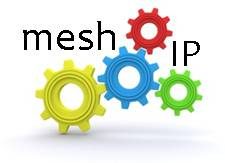 Before spacecraft are blasted off into space, the astronauts that travel in them, mission-control personnel, and other key staff undergo specialised education and training, launch procedures are verified and rehearsed, and policies are drawn up so that everyone is clear about their roles. Organisations wanting to move into the cloud computing space need to employ similar rigour.
Before spacecraft are blasted off into space, the astronauts that travel in them, mission-control personnel, and other key staff undergo specialised education and training, launch procedures are verified and rehearsed, and policies are drawn up so that everyone is clear about their roles. Organisations wanting to move into the cloud computing space need to employ similar rigour.
Although cloud service technology is easily available and is a potential business game-changer, it is best for enterprises to not plunge straight into it without a well thought out plan. First, be clear on your business strategy and what the specific drivers for change are. In the current climate many are prioritising on growing business revenue, reducing operational costs, and winning new customers. The correct use of cloud computing services may well be able to support these goals.
Understanding what cloud computing is all about will help organisations to identify its potential business value. In its purest form cloud computing is simply a style of computing delivery and not a technology as it is sometimes perceived. Resources such as compute power, storage assets, applications etc. are virtually pooled and delivered as services which are shared by many other users and organisations. This form of economical sharing of IT resources is often referred to as the multi-tenancy model.
Cost savings
Cloud providers build large data centres employing multi-tenancy infrastructure with massive scaling capability, giving their customers significant cost savings. Paying only for what services you use in cloud computing is what often sets it apart from traditional IT outsourcing when it comes to contracts and pricing. In cloud computing, when a user needs IT resources, he/she provisions them from the available resource pool, uses them as long as needed and, typically, pays for them based on usage and not in the form of a fixed charge. When the resources are no longer needed, they are returned to the pool.
It is important to understand that such sharing, while highly cost-effective, often brings with it security and data protections concerns. Despite efforts being made to assure customers of public cloud security, many organisations seek the benefits of the cloud delivery model without using shared public services. The logical solution to such concerns is a private cloud, where organisations duplicate the efficiency of the public cloud model, but build the cloud inside their protected premises. Many organisations are figuring out whether it makes sense for them to use public or private service; others feel a hybrid approach is the best solution.
Cloud types
Commonly cloud services are delivered in three configurations: Software as a Service (SaaS), in which users have access to shared commodity-like applications hosted on an internal or external cloud infrastructure; Platform as a Service (PaaS), essentially software and services running above the server operating system such as development tools, databases, middleware, authentication and security software; and finally Infrastructure as a Service (IaaS), which enables organisations to self-provision base operating systems such as Windows and Linux, thus eliminating the long waiting times for purchasing and installing physical servers.
The cloud computing connectivity model breaks down into four types: private, public, hybridand community cloud. A private cloud as previously mentioned is installed on business premises running on the internal corporate network and is an exclusive resource. A public cloud is accessible from routable worldwide Internet connections, with infrastructure and services shared with potentially thousands of customers. A hybrid cloud is a carefully selected blend of public and private services; powerful hybrid cloud use cases occur in functionality such as “cloud bursting”, where excess workloads are transferred to an external cloud to be processed. Finally the less well known “community cloud” is a collection of clouds between organisations where a level of trust or grouping exists between the entities.
Besides providing better alignment of cloud computing with business goals, the preparatory effort prior to cloud entry also gives an organisation the opportunity to improve its process framework. Invariably, internal business processes related to SLA, service management, incident management, disaster recovery, and so on will need to be tweaked, especially for public cloud utilisation.
The case for cloud
The last few years have seen thousands of use cases emerging that prove that, in the right circumstances, cloud computing does pays off significant benefits. Cloud computing services underpinned by an efficient virtualized architecture present all types of end-user companies –and cloud providers themselves – with a powerful competitive engine to respond to the most demanding business needs.
How each organisation develops its strategy for the cloud transformation journey will determine their ultimate return on investment – and maybe even survival. Their choice of cloud model, the underlying technology, and the consulting and implementation partners’ pedigree will be major factors in that journey to efficiency and business agility. In addition, never underestimate the importance of bringing on board business users early to provide key business input in the development of your cloud roadmap.
Like it or not, the pressure to be part of the private, public or hybrid cloud movement is there. Those that do not adopt it or adapt to it will find themselves probably in some sort of difficulty growing the business and staying viable. In the last couple of years, it’s been quite easy to hide a little bit behind the hype, so to speak. Not any more – we’re in a new world again and that future for now is Cloud Computing.
Laying the virtual foundation
In planning the journey to a private cloud implementation a well architected combination of server, network, software and storage virtualization layer is an essential design consideration. A resilient and performance-orientated cloud environment should include stringent automated IT operational security controls and effective monitoring and alerting, with high-availability failover capabilities in place.
Another key element of cloud computing is consumer cloud self-service. In cloud computing savvy business departments needing resources simply browse and select from a service catalogue, configure, add to the shopping cart and click to agree to pay a fee. Each month an invoice is generated for the consumer as a chargeback, giving visibility of just how much resources are consumed. In an ideal world cloud self-service should be a CIO’s automation dream. Though often successful when controls are in place, poorly designed self-service capability could lead to more headaches than it set out to solve if users go on an endless shopping spree for limited resources.
Public cloud considerations
Organisations looking at adopting public cloud computing also need to bear in mind that most cloud services are commoditised. Thus the luxury of determining every detail you have on your in-house infrastructure and middleware may not be available in all cases in public clouds. For many company applications and services this may not pose any form of a barrier or restriction. However, it becomes a key point when considering moving applications to external clouds. When developing a business case justification for using public cloud services, carefully analyse the SLA with the future cloud provider and the legal and process aspects of data handling and storage.
Despite the commercial benefits of public cloud, for many sectors such as financial, healthcare and government, the large-scale use of public cloud services may remain off the immediate radar due to regulatory, national and industry compliance concerns. As confidence grows in the security and reliability of public cloud computing some regulatory aspects may be relaxed, allowing further use of public cloud services.
Managing the cloud
Capacity and performance planning is an important factor in cloud management. Organisations need to understand how their cloud environment is growing and performing in order to make suitable projections about the amounts of network bandwidth, storage, CPU power, etc. needed. In the 1980s and 1990s IT needs had a sort of linear capacity progression and one could plan three years ahead with a decent degree of accuracy. The rise of the Internet and high data proliferation has shortened the planning window to between a few months and two years in some cases. In particular, unfettered growth of unstructured data is presenting the IT organisation with one of its biggest challenges. A smart cloud design will need to have features to make sure end-users consumers and the IT organisation are not caught out by any nasty capacity or performance surprises.
- The Customer Edge Drives the Need for NaaS - June 25, 2023
- Blockchain Evolves And Secures - January 13, 2019
- Bessemer Ventures’ 2018 Cloud Computing Trends - February 25, 2018




